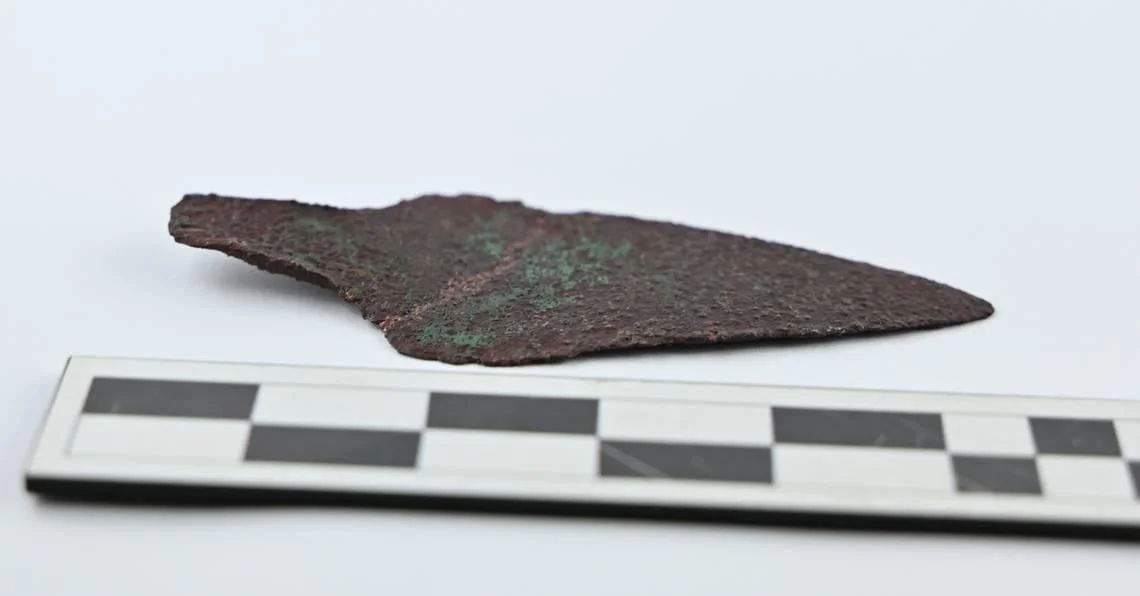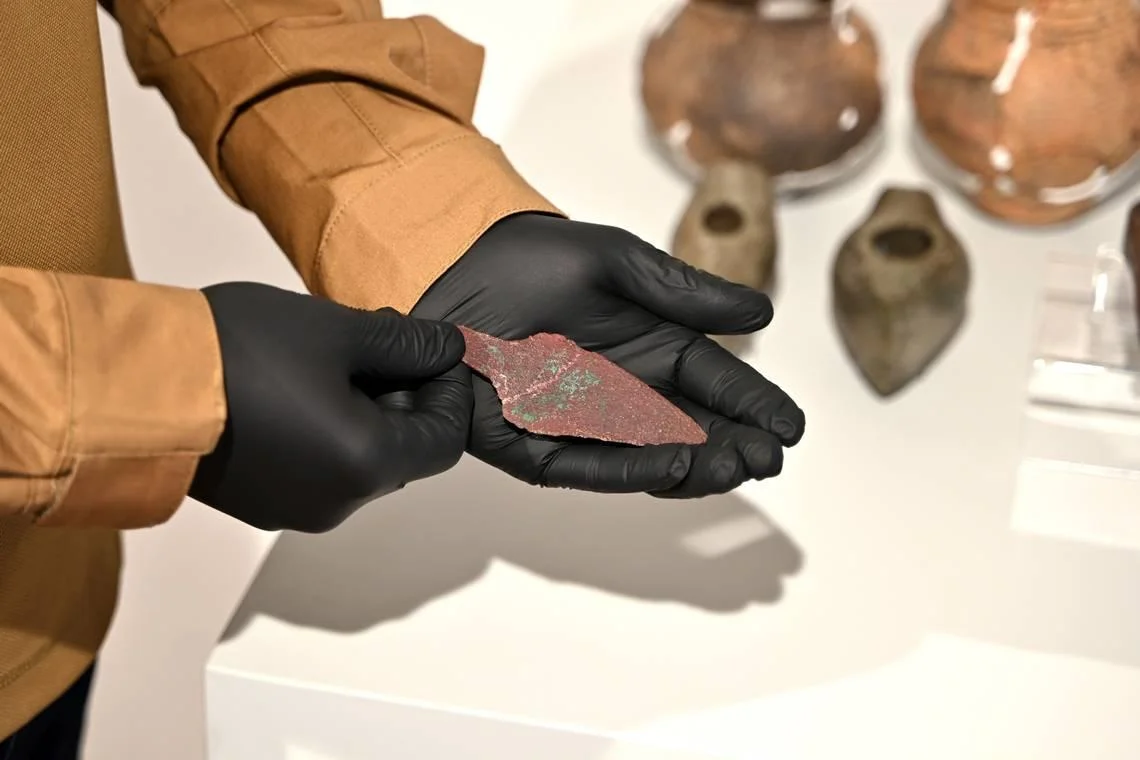Rare 4,000-year-old copper dagger found in Polish forest
A 4,000-year-old copper dagger has been unearthed in the forests near Korzenica, southeastern Poland. It is the oldest metal dagger discovered in the Subcarpathian Voivodeship.
 A close-up photo of the 4,000-year-old dagger found in Korzenica, southeastern Poland. Credit: Łukasz Śliwiński / Museum in Jarosław Orsetti House
A close-up photo of the 4,000-year-old dagger found in Korzenica, southeastern Poland. Credit: Łukasz Śliwiński / Museum in Jarosław Orsetti House
The dagger, measuring 10.5 cm in length, was found by Piotr Gorlach of the Historical and Exploration Association Grupa Jarosław during a routine metal detector survey in Jarosław Forest.
Initially searching for military artifacts from World War I or II, Gorlach stumbled upon the ancient weapon as he was about to conclude his expedition. “I had already finished my search for the day. When I returned to the car, I left the detector on out of habit. At some point, there was a signal. When I was digging up the forest floor, I saw a flat metal object covered with a green patina. I quickly realized that I was dealing with something much older than the military items from World War I and II that I was looking for in this area,” Gorlach recounted.
The significance of the find prompted Gorlach to contact the authorities, leading to collaboration with the Podkarpacie conservator of monuments in Przemyśl and the Orsetti House Museum. Archaeologists quickly identified the artifact as an exceptionally rare 4,000-year-old dagger, marking a significant milestone in the region’s history.
 The 4,000-year-old dagger found in Korzenica, southeastern Poland. Credit: Museum in Jarosław Orsetti House
The 4,000-year-old dagger found in Korzenica, southeastern Poland. Credit: Museum in Jarosław Orsetti House
Dr. Elżbieta Sieradzka-Burghardt from the Museum in Jarosław elaborated on the importance of the discovery, stating, “In the 3rd millennium BC, objects made of copper were extremely rare in these areas.” This rarity underscores the high social status of the dagger’s owner, as copper items were exclusive to elites during this period.
Further analysis suggests that the dagger may have originated from the Carpathian Basin or Ukrainian steppe, predating the widespread use of bronze metallurgy in the region. Dr. Marcin Burghardt, also from the Jarosław museum, contextualized the find within the broader transition from stone to metal tools, marking the dawn of the Bronze Age. “Instead of flint tools commonly used in the Stone Age, more and more metal products appear, heralding the transition to the next period – the Bronze Age,” noted Dr. Burghardt.
 Piotr Gorlach holds the 4,000-year-old dagger he found. Credit: Museum in Jarosław Orsetti House
Piotr Gorlach holds the 4,000-year-old dagger he found. Credit: Museum in Jarosław Orsetti House
While daggers were ubiquitous among warriors during this era, the use of copper for such a weapon highlights its owner’s status. Dr. Sieradzka-Burghardt emphasized the rarity of copper objects during this period, suggesting that the dagger’s origins lay beyond the local region. “There is rather no doubt that the dagger is not a local product,” she remarked.
The discovery adds a significant piece to the puzzle of early metalworking in Central Europe. Plans are underway to display the dagger at the Orsetti House Museum.
Related Post
The entire tomb is filled with signs and symbols that mention Queen Nefertiti and after some time passed and linguistic experts managed to decipher the stories told here, the team was baffled.
The mystery of the Solar Temple of Abu Gurab and its “Star Gate” comes to light
Thuya, the mother of Queen Tiye, left a monumental legacy by becoming the grandmother of Akhenaten and Tutankhamun.
The oldest traditions lead us to believe that blacks were the first inhabitants of Mexico.
The REAL face of King Tut: The pharaoh had feminine hips, clubfoot, and protruding teeth according to the ‘virtual autopsy,’ which also revealed that his parents were brother and sister.
The “oldest gold of humanity” was found in the Varna necropolis, on the Bulgarian Black Sea coast